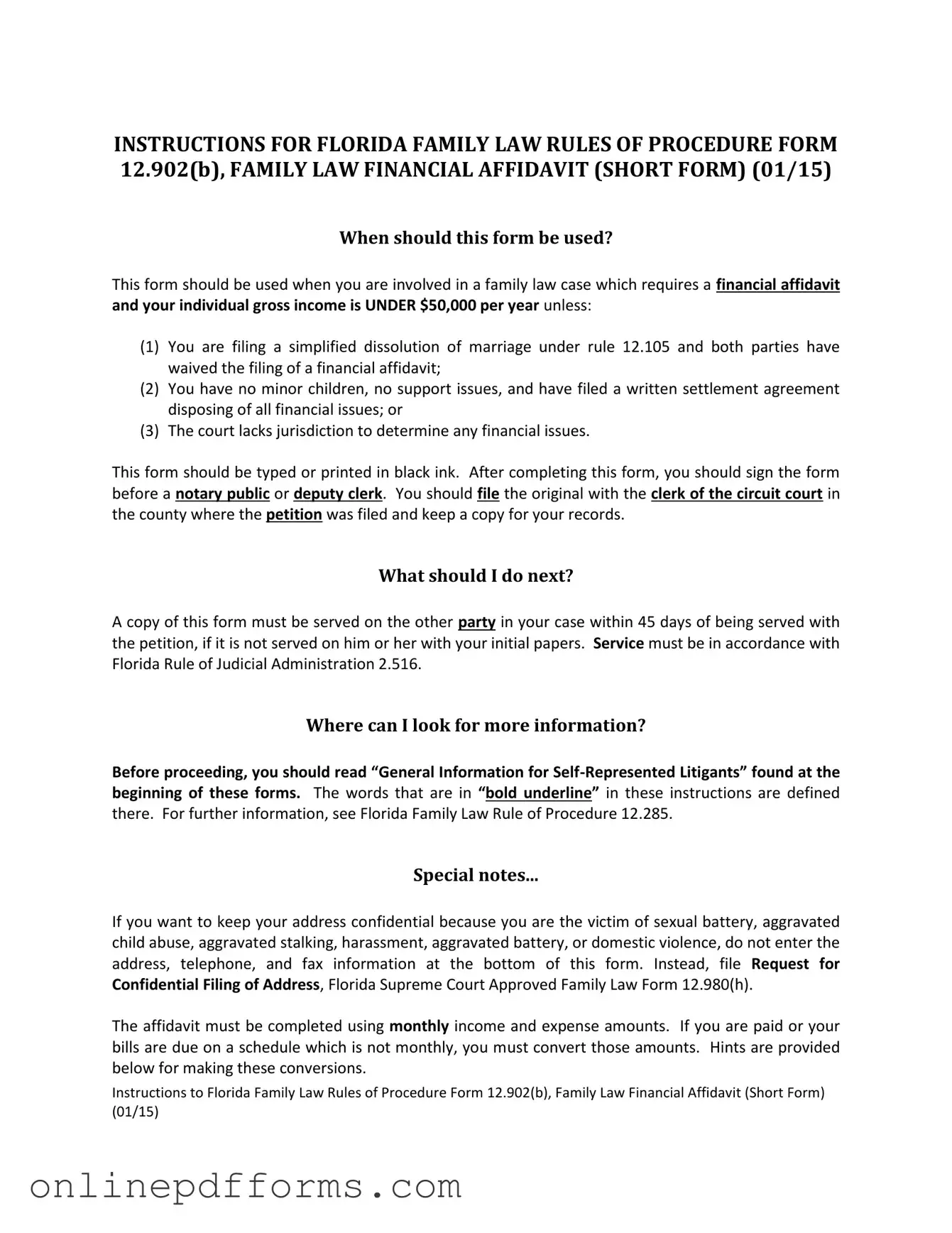The Florida Financial Affidavit Long form, designated as 12.902(a), serves a similar purpose to the Short form but is more comprehensive. It requires individuals to provide detailed financial information, including income, expenses, assets, and liabilities. This form is typically used in divorce proceedings where a more extensive financial disclosure is necessary. The Long form captures a broader financial picture, which can be critical in cases involving significant assets or complex financial situations.
The Affidavit of Support, often used in immigration cases, shares similarities with the Florida Financial Affidavit. Both documents require individuals to disclose their financial status. The Affidavit of Support, however, focuses on the ability to financially support a foreign relative seeking permanent residency. It includes income and asset information to ensure the applicant will not become a public charge. While the context differs, both forms aim to provide a clear picture of financial stability.
The Child Support Guidelines Worksheet is another document that parallels the Florida Financial Affidavit. This worksheet is used to calculate child support obligations based on the financial circumstances of both parents. Like the Financial Affidavit, it requires detailed income and expense disclosures. The information collected helps ensure that child support amounts are fair and based on each parent's financial situation.
The Statement of Net Worth is a document often used in divorce proceedings, similar to the Florida Financial Affidavit. It summarizes an individual's assets and liabilities, providing a snapshot of their financial standing. While the Florida Financial Affidavit includes a broader range of financial details, the Statement of Net Worth focuses on the net value, helping courts understand the financial implications of divorce settlements.
The Bankruptcy Schedules, particularly Schedules I and J, bear resemblance to the Florida Financial Affidavit. These schedules require individuals to list their income and monthly expenses, similar to the financial disclosures in the Affidavit. Both documents aim to provide a complete view of an individual's financial situation, though the context of bankruptcy introduces additional legal considerations and implications.
The Financial Disclosure Statement used in family law cases is another comparable document. This statement requires parties to disclose their financial information in a structured format, similar to the Florida Financial Affidavit. It often includes details about income, expenses, assets, and debts. The purpose is to ensure transparency during legal proceedings, particularly when determining support obligations or property division.
For those needing to address property transfer issues, the format of a Quitclaim Deed can be invaluable. Similar to how financial documents aid in clarifying obligations, the Quitclaim Deed enforces ownership transparency. To learn more about filling out this document correctly, you can find helpful resources at pdftemplates.info/texas-quitclaim-deed-form/, ensuring you're equipped to manage property transfers effectively.
The Income and Expense Declaration, used in various family law contexts, aligns closely with the Florida Financial Affidavit. This declaration requires individuals to provide a detailed account of their financial situation, including income sources and monthly expenses. It serves as a tool for courts to assess financial needs and obligations, ensuring fair outcomes in custody and support matters.
The Affidavit of Financial Status, often required in certain legal proceedings, shares key features with the Florida Financial Affidavit. This affidavit demands a comprehensive disclosure of an individual’s financial condition, including income, assets, and liabilities. Both documents serve to inform the court of a party’s financial circumstances, ensuring that decisions are made based on accurate and complete information.
Finally, the Financial Affidavit used in tax court cases has similarities to the Florida Financial Affidavit. This document requires individuals to outline their financial situation to support claims or disputes regarding tax liabilities. Both forms require a detailed account of income and expenses, emphasizing the importance of transparency in financial matters, whether in family law or tax disputes.
